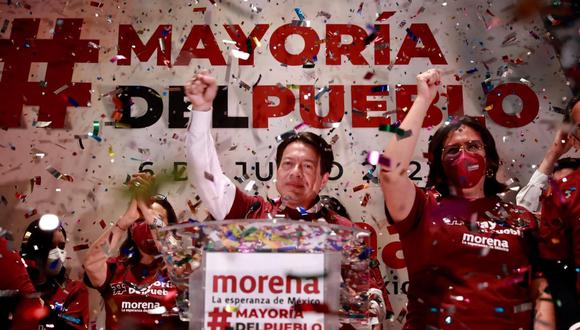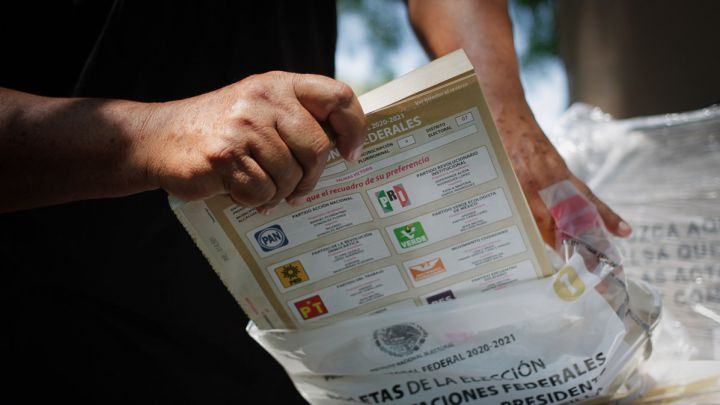On June 6, Mexico held election that became the largest electoral process in the modern history of democracy in the country. This time the electoral race took place in a very tense atmosphere. According to official figures, 89 politicians have been killed in the country since September 2020. Which political forces managed to win the last electoral process? How will the results of this election affect the development of the country?
Last Sunday, the Mexicans elected 21.000 executives and representatives at various levels, including 15 governors, 500 federal and 1.063 regional deputies, as well as the heads of 1.926 municipalities in 30 states. About 93.5 million people were invited to vote, according to the National Electoral Institute (Spanish – Instituto Nacional Electoral, INE), the total turnout was about 48.6%.
The results of the election in the Lower House of the Congress of Mexico were awaited with special impatience, because it is the Chamber of Deputies that is an important mechanism for the reforms that the President Andrés Manuel López Obrador intends to carry out. Thus, the main intrigue of this electoral process was the dilemma: whether the party of the current leader, “National Regeneration Movement” (Spanish – Movimiento Regeneración Nacional, MORENA), will be able to consolidate the necessary majority to implement the planned bills, and whether this political bloc will carry out this process in alone or it will have to look for someone to negotiate with and form coalitions.
According to preliminary data, the party of Lopez Obrador failed to achieve an absolute majority, however, it gained about 35% of the vote, and it is predicted from 190 to 203 seats in the Chamber of Deputies. Undoubtedly, this figure is less than the 253 seats that the “MORENA” party possessed before the election, but together with the allies – Labour and Greens – the absolute majority of the ruling force within the “Let’s Make History Together” (Spanish – Juntos Haremos Historia) coalition will be ensured, and the head of state will be able to continue the chosen socio-economic course, called the “Fourth transformation of Mexico”.
After Obrador’s supporters are followed by the conservative “Party of National Action” (Spanish – Partido Acción Nacional, PAN) with approximately 111 seats (range: 106 and 117), which is an opposition bloc. Thus, all parties have united into two different coalitions. The first bloc was formed around the ruling “MORENA” party, it also included the “Green Ecological Party of Mexico” (Spanish – Partido Verde Ecologista de México, PVEM) and the leftist “Party of Labor” (Spanish – Partido del Trabajo, PT).

In turn, the opposition is formed from the political organization of the former President Enrique Peña Nieto, the “Institutional Revolutionary Party” (Spanish – Partido Revolucionario Institucional, PRI), the “Party of National Action” and the “Party of Democratic Revolution” (Spanish – Partido de la Revolución Democrática, PRD). The most important task of the ruling bloc was to get 334 seats, providing an opportunity for reforms of a constitutional scale. The minimum intention of the opposition alliance was precisely to prevent the aforementioned qualified majority, which, according to preliminary data, the “Let’s Make History Together” coalition managed to reach with a result of about 280 seats.
In addition, the election were marked by the breakthrough of the liberal “Civil Movement” (Spanish – Movimiento Ciudadano), which is not a member of any union. It managed to gain from 20 to 27 seats in the Lower House and become a significant political force.
Local elections also were held in Mexico on June 6. Nearly half (15) of the 32 Mexican states elected new leaders by simple majority. The formed coalitions of the Chamber of Deputies also affected this situation partially and fragmentarily, depending on the agreements reached by each of the parties. The former President”s political party (PRI), which so far ruled in 8 out of 15 positions at stake, has lost the most in the electoral process. The “Institutional Revolutionary Party” failed to maintain any presence among the governorships that it had until recently.
The “MORENA” party was able to get 11 out of 15 governorships. According to preliminary data, the ruling party managed to keep the state of Baja California and wrest several other states from the opposition. In one of them, in Guerrero, Obrador’s party had to withdraw its candidate Felix Salgado Macedonio (Spanish – José Félix Salgado Macedonio), previously accused of rape. He was replaced by his daughter – Evelyn Salgado (Spanish – Evelyn Cecia Salgado Pineda).

State capitals, mid-sized cities and small municipalities across the country have also re-elected their leaders through an electoral process marked in many cases by violence against candidates. The election were accompanied by attempts to disrupt and intimidate the population. For example, a bag and a box of human remains were planted at two polling stations in Terrazas del Valle, Baja California.
Turning to the preliminary results of the electoral process in the federal capital, it should be noted that the votes were distributed in a paradoxically linear manner: in the eastern regions, the victory was won by the supporters of the ruling party, and in the western regions – by the representatives of the aforementioned coalition of traditional parties (PAN, PRI and PRD). This polarization is very much explained in the level of per capita income: in the east, the working class lives predominantly, while the wealthiest segments of the population are concentrated in the west of the Mexican capital. Local media have already begun to compare the population of the metropolis with “two Germanys divided by the Berlin Wall”.
Summing up, it is worth emphasizing that the June 6 electoral process demonstrated the consolidation of the bloc opposed to the current government. However, in spite of everything, on the whole, the ruling party with the help of the alliance managed to maintain a majority in parliament and strengthen its positions at various levels. Nevertheless, it’s important to pay attention to some of the nuances. For example, the “Green Ecological Party of Mexico”, although it was a supporter of the political organization of López Obrador, as history shows, can act in a very independent way. At one time, the “greens” supported the “Institutional Revolutionary Party”, and they became allies of the “MORENA” not so long ago. Thus, the question arises about how strong this alliance will be, and what it will require in the new conditions. The head of state intends to change the Constitution for planned reforms in the energy sector, the judicial system and electoral legislation. If the alliance with the “Green Ecological Party of Mexico” fails, Andrés Manuel López Obrador will be forced to negotiate with the “Civil Movement”, and relations with this political party are very complicated, and the past election have added a little “spark”.


